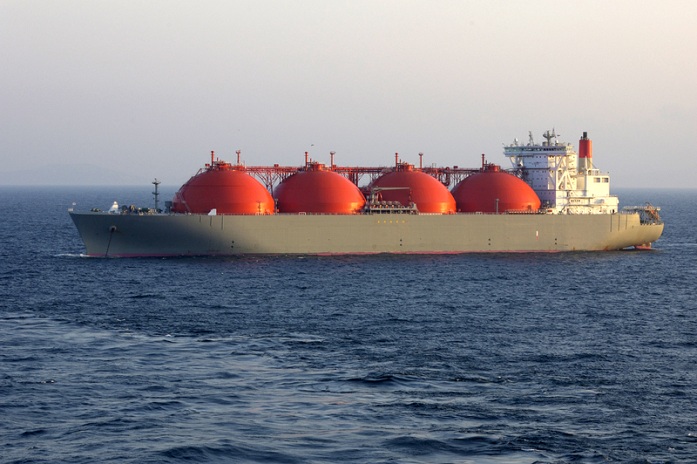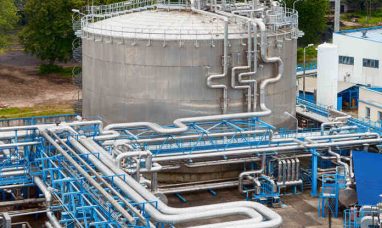HOUSTON, July 07, 2022 (GLOBE NEWSWIRE) — MRC Global Inc. (NYSE: MRC), the leading global distributor of pipe, valves, fittings and infrastructure products and services to diversified energy, industrial and gas utility end-markets, today announced it has raised its 2022 guidance and provided selected preliminary second quarter 2022 results.
Rob Saltiel, MRC Global’s President and CEO, stated, “I am very pleased with our excellent financial performance in the first half of 2022. The year started off strong and has continued to improve, significantly exceeding our expectations. Robust activity in all of our sectors underpins our strong outlook for the full year, supported by continued growth in our order intake and backlog. We are increasing our 2022 targets to $3.3 billion in sales and $230 million of adjusted EBITDA, or 7% of targeted sales.”
Raising 2022 Guidance
Strong results in the first half of the year and a positive outlook for each of the company’s end-markets for the remainder of the year support an upward revision to the company’s 2022 forecast.
- Revenue is now targeted to be $3.3 billion, up from the previous guidance of $3.1 billion, which would be a 24% increase in 2022 revenue over 2021.
- Adjusted EBITDA is targeted to be $230 million, up from the previous guidance of $200 million, which would be a 58% increase in 2022 adjusted EBITDA over 2021.
- Adjusted EBITDA as a percentage of sales is targeted at approximately 7%, up from the previous guidance of 6.5%, which would be a 150 basis-point improvement over 2021.
The company expects third quarter revenue will be higher than the second quarter with a seasonal decline in the fourth quarter.
Adjusted EBITDA and adjusted EBITDA as a percentage of sales are non-GAAP measures. Please refer to the note regarding adjusted EBITDA below.
Preliminary Second Quarter 2022 Results
Based on preliminary results, MRC Global now expects its second quarter 2022 sales to be up approximately 14% over the first quarter, as compared to the high single-digit improvement previously communicated. All four of the company’s end-markets reflect strong sequential revenue growth, led by greater than expected increases in the Gas Utilities and Downstream, Industrial and Energy Transition (DIET) sectors. The adjusted EBITDA margin percentage for the second quarter of 2022 is expected to be approximately 7.5% of sales, which would be the best quarterly adjusted EBITDA margin percentage since 2018.
Additional second quarter 2022 earnings and annual outlook information will be provided in the company’s scheduled earnings release and earnings call previously announced.
Non-GAAP Measure (Adjusted EBITDA) Disclosure
Adjusted EBITDA and adjusted EBITDA as a percentage of sales are non-GAAP measures. The company defines adjusted EBITDA as net income plus interest, income taxes, depreciation and amortization, amortization of intangibles and certain other expenses, including non-cash expenses (such as equity-based compensation), plus or minus the impact of its last-in, first-out (LIFO) inventory costing methodology.
Reconciling the company’s preliminary second quarter 2022 adjusted EBITDA (and the resulting adjusted EBITDA percentage of sales) to the company’s preliminary second quarter net income is not reasonably possible as the company has not yet fully closed its second quarter books and there may be variations in sales, selling, general and administrative expense, LIFO expense and income taxes, among other line items. The company will provide a full reconciliation when it finalizes its books, releases its second quarter 2022 results and files its quarterly report on Form 10-Q for the quarter.
Reconciling the company’s adjusted EBITDA 2022 target (and its outlook regarding adjusted EBITDA percentage of sales) to annual 2022 outlook regarding the company’s net income is not reasonably possible as the impact from inflation or deflation on indices used to calculate LIFO is not possible to reasonably predict.
The company presents adjusted EBITDA because the company believes adjusted EBITDA is a useful indicator of the company’s operating performance. Among other things, adjusted EBITDA measures the company’s operating performance without regard to certain non-recurring, non-cash or transaction-related expenses. Adjusted EBITDA, however, does not represent and should not be considered as an alternative to net income, cash flow from operations or any other measure of financial performance calculated and presented in accordance with GAAP. Because adjusted EBITDA does not account for certain expenses, its utility as a measure of the company’s operating performance has material limitations. Because of these limitations, the company does not view adjusted EBITDA in isolation or as a primary performance measure and also uses other measures, such as net income and sales, to measure operating performance.
About MRC Global Inc.
Headquartered in Houston, Texas, MRC Global (NYSE: MRC) is the leading global distributor of pipe, valves, fittings (PVF) and other infrastructure products and services to diversified end-markets including the gas utilities, downstream, industrial and energy transition, upstream production, and midstream pipeline sectors. With over 100 years of experience, MRC Global has provided customers with innovative supply chain solutions, technical product expertise and a robust digital platform from a worldwide network of 210 locations including valve and engineering centers. The company’s unmatched quality assurance program offers 250,000 SKUs from 10,000 suppliers, simplifying the supply chain for over 10,000 customers. Find out more at
www.mrcglobal.com
This news release contains forward-looking statements within the meaning of Section 27A of the Securities Act and Section 21E of the Exchange Act. Words such as “will,” “expect,” “expected,” “intend,” “believes,” “on-track,” “well positioned,” “strong position,” “looking forward,” “guidance,” “plans,” “can,” “target,” “targeted” and similar expressions are intended to identify forward-looking statements.
Statements about the company’s business, including its strategy, its industry, the company’s future profitability, the company’s guidance on its sales, adjusted EBITDA, tax rate, capital expenditures, achieving cost savings and cash flow, debt reduction, liquidity, growth in the company’s various markets and the company’s expectations, beliefs, plans, strategies, objectives, prospects and assumptions are not guarantees of future performance. These statements are based on management’s expectations that involve a number of business risks and uncertainties, any of which could cause actual results to differ materially from those expressed in or implied by the forward-looking statements. These statements involve known and unknown risks, uncertainties and other factors, most of which are difficult to predict and many of which are beyond MRC Global’s control, including the factors described in the company’s SEC filings that may cause the company’s actual results and performance to be materially different from any future results or performance expressed or implied by these forward-looking statements.
These risks and uncertainties include (among others) decreases in oil and natural gas prices; decreases in oil and natural gas industry expenditure levels, which may result from decreased oil and natural gas prices or other factors; U.S. and international general economic conditions; the company’s ability to compete successfully with other companies in MRC Global’s industry; the risk that manufacturers of the products the company distributes will sell a substantial amount of goods directly to end users in the industry sectors the company serves; unexpected supply shortages; cost increases by the company’s suppliers; the company’s lack of long-term contracts with most of its suppliers; suppliers’ price reductions of products that the company sells, which could cause the value of the company’s inventory to decline; decreases in steel prices, which could significantly lower MRC Global’s profit; increases in steel prices, which the company may be unable to pass along to its customers which could significantly lower its profit; the company’s lack of long-term contracts with many of its customers and the company’s lack of contracts with customers that require minimum purchase volumes; changes in the company’s customer and product mix; risks related to the company’s customers’ creditworthiness; the success of the company’s acquisition strategies; the potential adverse effects associated with integrating acquisitions into the company’s business and whether these acquisitions will yield their intended benefits; the company’s significant indebtedness; the dependence on the company’s subsidiaries for cash to meet its obligations; changes in the company’s credit profile; a decline in demand for certain of the products the company distributes if import restrictions on these products are lifted or imposed; significant substitution of alternative fuels for oil and gas; environmental, health and safety laws and regulations and the interpretation or implementation thereof; the sufficiency of the company’s insurance policies to cover losses, including liabilities arising from litigation; product liability claims against the company; pending or future asbestos-related claims against the company; the potential loss of key personnel; adverse health events such as a pandemic; interruption in the proper functioning of the company’s information systems and the occurrence of cyber security incidents; loss of third-party transportation providers; potential inability to obtain necessary capital; risks related to adverse weather events or natural disasters; impairment of the company’s goodwill or other intangible assets; adverse changes in political or economic conditions in the countries in which the company operates; exposure to U.S. and international laws and regulations, including the U.S. Foreign Corrupt Practices Act and the U.K. Bribery Act and other economic sanction programs; risks associated with international stability and geopolitical developments; risks relating to ongoing evaluations of internal controls required by Section 404 of the Sarbanes-Oxley Act; risks related to the company’s intention not to pay dividends; and risks arising from compliance with and changes in law in the countries in which we operate, including (among others) changes in tax law, tax rates and interpretation in tax laws.
For a discussion of key risk factors, please see the risk factors disclosed in the company’s SEC filings, which are available on the SEC’s website at
www.sec.gov
and on the company’s website,
www.mrcglobal.com
. MRC Global’s filings and other important information are also available on the Investor Relations page of the company’s website at
www.mrcglobal.com.
Undue reliance should not be placed on the company’s forward-looking statements. Although forward-looking statements reflect the company’s good faith beliefs, reliance should not be placed on forward-looking statements because they involve known and unknown risks, uncertainties and other factors, which may cause the company’s actual results, performance or achievements or future events to differ materially from anticipated future results, performance or achievements or future events expressed or implied by such forward-looking statements. The company undertakes no obligation to publicly update or revise any forward-looking statement, whether as a result of new information, future events, changed circumstances or otherwise, except to the extent required by law.
Contact:
Monica Broughton
Investor Relations
MRC Global Inc.
832-308-2847
Featured Image: Megapixl – Dpsfotogmailcom















